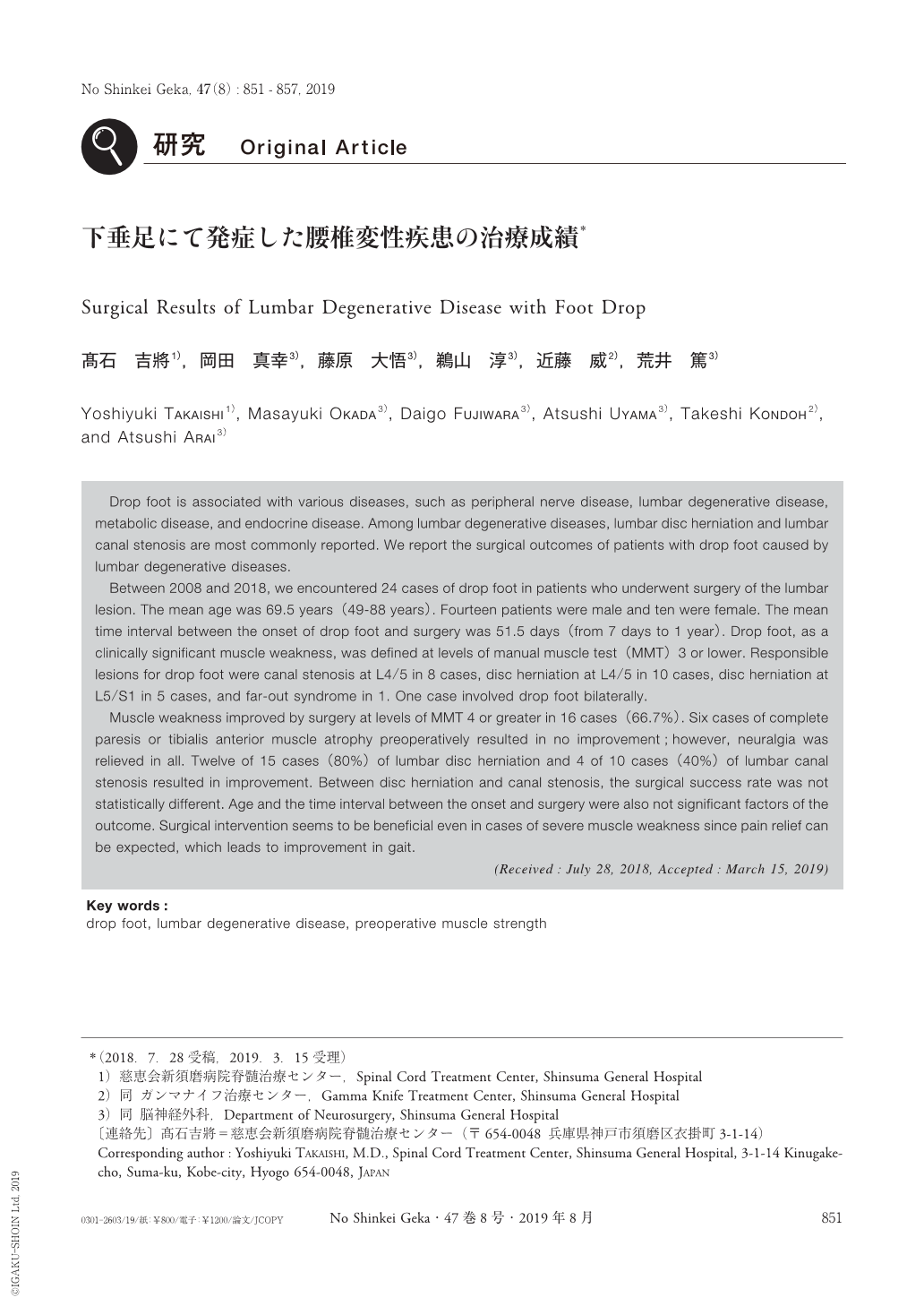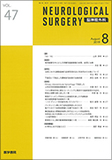Japanese
English
- 有料閲覧
- Abstract 文献概要
- 1ページ目 Look Inside
- 参考文献 Reference
Ⅰ.はじめに
腰椎変性疾患の中で,下垂足(foot dropまたはdrop foot)にて発症する症例に時折遭遇する.早急な治療方針の決定を迫られることが多いが,治療方針,手術のタイミングについて,一定の見解は得られていない.
今回,当院において経験した下垂足にて発症した腰椎変性疾患について,診断,手術成績,その成績に影響を与える因子について検討した.
Drop foot is associated with various diseases, such as peripheral nerve disease, lumbar degenerative disease, metabolic disease, and endocrine disease. Among lumbar degenerative diseases, lumbar disc herniation and lumbar canal stenosis are most commonly reported. We report the surgical outcomes of patients with drop foot caused by lumbar degenerative diseases.
Between 2008 and 2018, we encountered 24 cases of drop foot in patients who underwent surgery of the lumbar lesion. The mean age was 69.5 years(49-88 years). Fourteen patients were male and ten were female. The mean time interval between the onset of drop foot and surgery was 51.5 days(from 7 days to 1 year). Drop foot, as a clinically significant muscle weakness, was defined at levels of manual muscle test(MMT)3 or lower. Responsible lesions for drop foot were canal stenosis at L4/5 in 8 cases, disc herniation at L4/5 in 10 cases, disc herniation at L5/S1 in 5 cases, and far-out syndrome in 1. One case involved drop foot bilaterally.
Muscle weakness improved by surgery at levels of MMT 4 or greater in 16 cases(66.7%). Six cases of complete paresis or tibialis anterior muscle atrophy preoperatively resulted in no improvement;however, neuralgia was relieved in all. Twelve of 15 cases(80%)of lumbar disc herniation and 4 of 10 cases(40%)of lumbar canal stenosis resulted in improvement. Between disc herniation and canal stenosis, the surgical success rate was not statistically different. Age and the time interval between the onset and surgery were also not significant factors of the outcome. Surgical intervention seems to be beneficial even in cases of severe muscle weakness since pain relief can be expected, which leads to improvement in gait.

Copyright © 2019, Igaku-Shoin Ltd. All rights reserved.


